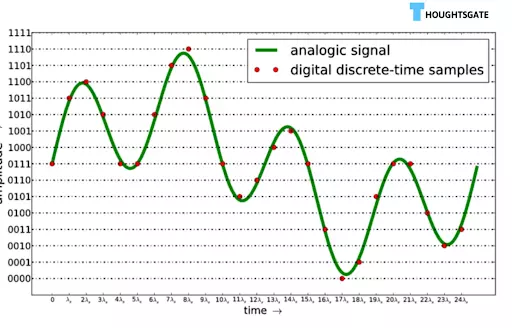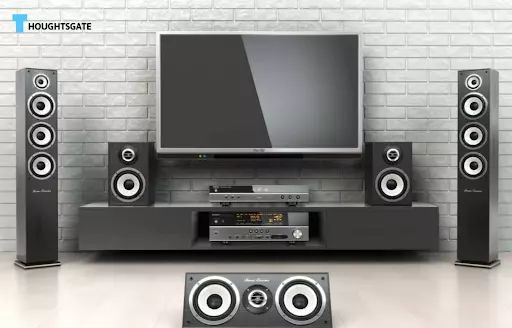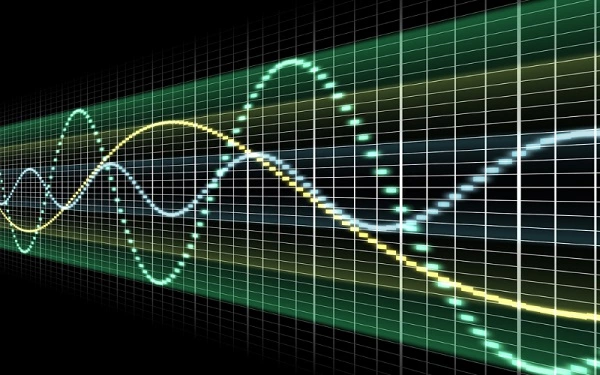When faced with choosing between bitstream and PCM, it can be quite a perplexing task. While some argue that the two are equivalent, it is essential to understand their differences and determine which would best suit your needs.
Imagine this scenario: you are in the mood for a retro movie night and pull out an old DVD to watch on your Dolby Digital home theatre or Blu-Ray player. You set everything up, but when you start scrolling through the options, you come across terms such as “bitstream,” “Dolby Digital,” and “PCM.”
To make matters worse, your friends suggest you pick one and move on. However, settling for something less than optimal is different from your style. A quick online search for “Bitstream vs PCM” yields several technical articles that leave you overwhelmed and lost.
Our Thoughstgate experts will explain the technical terms and provide detailed insights to help you choose the best option.
What is Bitstream?

To understand the difference between bitstream and PCM, first, defining what bitstream means is essential. In digital data transmission, Bitstream describes a continuous data sequence as a stream of bits. Bitstream is a flowing stream of bits, each representing information.
Regarding audio transmission, bitstream technology involves compressing the audio data and converting it into digital bits. The player sends these bits downstream to the receiver, which decodes and transforms them into the original audio signals. This process places a higher performance burden on the receiver device, such as headphones or speakers, because it must decode the compressed data in real time.
Technical Details of Bitstream Audio Format
In technical terms, bitstream audio is a compressed digital format that uses lossless compression to reduce audio data size without sacrificing quality. Dolby Digital is the most commonly used bitstream audio format, a standard for home theatre surround sound that supports up to 5.1 audio channels.
Bitstream audio is typically stored in a container format, such as a Blu-ray disc or a digital video file. It is encoded using a codec that compresses the audio data and adds metadata to the stream. When the bitstream is played back, the codec in the receiver or amplifier decodes the data. It converts it back into an analogue audio signal that speakers can use.
Pros and Cons of Bitstream Audio
One of the main advantages of bitstream audio is that it allows for high-quality, lossless audio to be compressed into a smaller size, making it easier to store and transmit. This is especially important in home theatre systems, where large audio files can take up a lot of space and be difficult to manage.
Another advantage of bitstream audio is that it can support multiple audio channels, allowing for immersive surround sound experiences. This is particularly important in movies and video games, where sound effects and music are crucial in creating an immersive and engaging experience.
However, there are also some downsides to bitstream audio. One of the main disadvantages is that it requires a compatible receiver or amplifier that can decode the audio data. Older or less advanced systems may need help properly playing back bitstream audio.
Another potential downside of bitstream audio is that it can be more complex and challenging to work with than other digital audio formats. This is because it requires specific codecs and software to encode and decode the data and may not be compatible with all devices and platforms.
What is PCM?

PCM (Pulse Code Modulation) audio is a method for digitally encoding audio signals. It works by taking an analogue audio signal and converting it into a series of digital values, which can then be stored, transmitted, and reproduced as sound. This process is known as analogue-to-digital conversion (ADC).
The PCM encoding process starts by sampling the analogue audio signal at regular intervals, typically thousands of times per second. Each sample is then quantised or assigned a specific digital value based on its amplitude.
The quantisation process involves dividing the analogue signal’s amplitude range into a finite number of discrete levels. The number of levels, or bit depth, determines the accuracy of the digital representation of the original analogue signal.
Typically, the system stores the digital values as a continuous data stream after quantization, representing each sample with a binary number. Digital-to-analogue conversion (DAC) processes the digital audio data when playing it back. The DAC process reconstructs the original analogue signal from the digital values by converting each binary number to an analogue voltage level. The resulting analogue signal can be amplified through a speaker or headphones.
Technical Details of PCM Audio Format
Technically, PCM audio is a digital format that uses linear quantization to convert analogue audio signals into digital data. The digital data is typically stored in a container format, such as a WAV or AIFF file, or transmitted over a digital audio interface, such as S/PDIF or HDMI.
PCM audio can support a wide range of sample rates and bit depths, allowing it to be used in various applications. Standard sample rates for PCM audio include 44.1 kHz (used in CD-quality audio), 48 kHz (used in DVD and Blu-ray audio), and 96 kHz (used in high-resolution audio). Bit depths range from 16 bits (used in CD-quality audio) to 24 or 32 bits (used in high-resolution audio).
Pros and Cons of PCM Audio
One of the main advantages of PCM audio is its high fidelity and accuracy. PCM audio provides a high-quality listening experience because it does not compress or process digital audio data.
Another advantage of PCM audio is its compatibility with various devices and software. PCM audio is a standard digital format widely supported by audio hardware and software, making it a reliable and versatile choice for audio recording and playback.
However, there are also some potential downsides to PCM audio. One of the main disadvantages is its large file size, especially at high sample rates and bit depths. This can make storing and transmitting PCM audio data more difficult than other compressed audio formats.
Another potential downside of PCM audio is its need for more processing options. Because PCM audio is a “raw” digital format, it offers no built-in compression, equalization, or other processing options.
Comparison of PCM and Bitstream audio formats:

Regarding digital audio formats, the most common options are digital stereo and Bitstream audio. Both formats have unique strengths and weaknesses, and choosing the right one for a particular application depends on several factors.
Here are some key differences between PCM and bitstream audio formats:
Audio Quality
The audio quality is one of the most significant differences between PCM and Bitstream. Due to its linear quantization process, PCM is a “raw” audio format with high fidelity and accuracy. On the other hand, bitstream audio uses a compressed format, such as Dolby Digital or DTS, which can result in some loss of audio quality. However, bitstream audio can also support multichannel surround sound, enhancing the listening experience for certain types of content.
Compatibility
Another important consideration is compatibility. Most digital audio devices widely support PCM audio, including computers, CD and DVD players, and home theater systems. On the other hand, Bitstream audio may require specific hardware or software decoders to play the audio correctly. This can be a limitation for some users, particularly if they need to play the audio on multiple devices.
Bandwidth
Bandwidth is another factor to consider when choosing between PCM and bitstream audio formats. Because PCM is a “raw” format, it requires a higher bandwidth than bitstream audio to transmit the same amount of audio data. This can be a limitation for applications with limited bandwidth, such as streaming audio over the internet. Bitstream audio, however, can offer more efficient use of bandwidth thanks to its compression algorithms.
Sound Reproduction and Processing
Finally, it’s worth considering how each format affects sound reproduction and processing. PCM audio offers a more “pure” sound reproduction, as it does not involve any compression or other processing that can alter the original audio signal. This can be an advantage for music production, where accurate sound reproduction is essential. Bitstream audio can include data for surround sound, bass control, and dynamic range compression, giving it more processing possibilities.
Explanation of PCM stereo and Bitstream audio:
PCM stereo and bitstream audio are standard digital stereo and surround sound playback formats. Here is a brief explanation of each format and the differences between stereo and surround sound.
PCM Stereo
PCM stereo is a raw digital audio format that uses two channels to reproduce sound. It is commonly used for music playback and is widely supported by most digital audio devices, including computers, CD and DVD players, and home theatre systems. PCM stereo has high fidelity and accuracy because of its linear quantization method. It can also reproduce pure, unprocessed sound. It is an excellent format for music enthusiasts who want to enjoy their favourite songs in the highest quality possible.
Bitstream Audio
On the other hand, Bitstream audio is a compressed digital format commonly used for surround sound playback. It can support multichannel surround sound, enhancing the listening experience for certain types of content, such as movies and video games. Bitstream audio standards like Dolby Digital and DTS compress audio files to make them more network-efficient. However, this compression can result in some loss of audio quality compared to PCM stereo.
Differences between Stereo and Surround Sound
The key difference between stereo and surround sound is how many channels reproduce sound. Stereo uses two channels, while surround sound can use up to six or more channels. Surround sound allows for a more immersive listening experience, as sound can be reproduced from different directions, creating a more realistic and dynamic sound field. This can be particularly beneficial for movies and video games, where sound effects and dialogue are crucial to the overall experience.
Which format is better for different setups, such as soundbars and home theatre systems:
The choice between PCM stereo and bitstream audio depends on the type of audio setup you have. PCM stereo is suitable for soundbars and basic stereo systems since it offers high quality and precision in two channels. However, Bitstream audio supports multichannel surround sound and improves the listening experience in a home theatre system with numerous speakers.
PCM or Bitstream for Dolby Atmos?

Dolby Atmos is a surround sound technology that has recently gained popularity. It provides a more immersive audio experience by adding height channels to the traditional surround sound setup. When choosing between PCM or bitstream for Dolby Atmos, there are a few factors to consider.
Explanation of Dolby Atmos and its Capabilities
Dolby Atmos is a sound technology that adds height channels to the traditional surround sound setup, allowing for a more immersive listening experience. Instead of just having sounds from in front of or behind the listener, Dolby Atmos can also add sounds from above, creating a more realistic and three-dimensional soundscape. This technology is commonly used in movie theatres but is also available for home theatre systems.
Which Format is Better for Dolby Atmos Sound Systems
When it comes to choosing between PCM or bitstream for Dolby Atmos sound systems, it depends on the capabilities of your system. If your system can decode Dolby Atmos directly, then Bitstream is the best option. This is because bitstream can carry all the necessary information for the Dolby Atmos encoding, including the metadata that indicates where the height channels should be placed. Bitstream also allows for more efficient data transmission, as it is a compressed format.
On the other hand, if your system cannot decode Dolby Atmos directly, then PCM may be the better option. This is because PCM can carry more audio data channels than bitstream, allowing for more flexibility in the setup of the Dolby Atmos system. However, this approach requires the audio processor to decode the Dolby Atmos information and map it to the appropriate channels, which can add additional processing and reduce the overall quality of the audio.
Pros and Cons of Each Format for Dolby Atmos
The main advantage of the bitstream for Dolby Atmos is that it can carry all the necessary information in a compressed format, allowing for efficient data transmission and higher-quality audio. Additionally, bitstream is the preferred format for systems capable of decoding Dolby Atmos directly.
The main advantage of PCM for Dolby Atmos is that it can carry more channels of audio data, allowing for more flexibility in the setup of the Dolby Atmos system. However, this approach requires additional processing to map the Dolby Atmos information to the appropriate channels, which can potentially reduce the overall quality of the audio.
In summary, the choice between PCM or bitstream for Dolby Atmos depends on the capabilities of your system. If your system can decode Dolby Atmos directly, the bitstream is the best option for efficient data transmission and higher-quality audio. If your system cannot decode Dolby Atmos directly, then PCM may be the better option for more flexibility in the system’s setup. Ultimately, both formats have advantages and disadvantages, and the best choice will depend on the specific requirements of your setup.
Dolby Digital vs. PCM

Dolby Atmos is a surround sound technology that has recently gained popularity. It provides a more immersive audio experience by adding height channels to the traditional surround sound setup. When choosing between PCM or bitstream for Dolby Atmos, there are a few factors to consider.
Explanation of Dolby Atmos and its Capabilities
Dolby Atmos is a sound technology that adds height channels to the traditional surround sound setup, allowing for a more immersive listening experience. Instead of just having sounds from in front of or behind the listener, Dolby Atmos can also add sounds from above, creating a more realistic and three-dimensional soundscape. This technology is commonly used in movie theatres but is also available for home theatre systems.
Which Format is Better for Dolby Atmos Sound Systems
When it comes to choosing between PCM or bitstream for Dolby Atmos sound systems, it depends on the capabilities of your system. If your system can decode Dolby Atmos directly, then Bitstream is the best option. This is because bitstream can carry all the necessary information for the Dolby Atmos encoding, including the metadata that indicates where the height channels should be placed. Bitstream also allows for more efficient data transmission, as it is a compressed format.
On the other hand, if your system cannot decode Dolby Atmos directly, then PCM may be the better option. This is because PCM can carry more audio data channels than bitstream, allowing for more flexibility in the setup of the Dolby Atmos system. However, this approach requires the audio processor to decode the Dolby Atmos information and map it to the appropriate channels, which can potentially add additional processing and reduce the overall quality of the audio.
Pros and Cons of Each Format for Dolby Atmos
The main advantage of the bitstream for Dolby Atmos is that it can carry all the necessary information in a compressed format, allowing for efficient data transmission and higher-quality audio. Additionally, bitstream is the preferred format for systems capable of decoding Dolby Atmos directly.
The main advantage of PCM for Dolby Atmos is that it can carry more channels of audio data, allowing for more flexibility in the setup of the Dolby Atmos system. However, this approach requires additional processing to map the Dolby Atmos information to the appropriate channels, which can potentially reduce the overall quality of the audio.
Explanation of Dolby Digital and PCM Audio Formats
Dolby Digital is a compressed digital audio format commonly used in DVDs, Blu-ray discs, and digital TV broadcasts. It is designed to provide high-quality audio in a smaller file size, which makes it ideal for transmitting audio over digital channels. Dolby Digital can support up to 5.1 audio channels and uses a bitstream format to deliver the audio data.
PCM (Pulse Code Modulation) is an uncompressed digital audio format commonly used in audio CDs, music downloads, and some high-definition video formats. PCM audio uses a pulse code modulation technique to convert analogue audio signals into digital data, which can then be stored and transmitted in its original form. Depending on the specific setup, PCM can support a wide range of audio channels and sampling rates.
Comparison of Dolby Digital and PCM Audio Quality
The main difference between Dolby Digital and PCM audio quality is related to compression. Dolby Digital uses a lossy compression technique to reduce the size of the audio data, which can result in some loss of audio quality. On the other hand, PCM audio is uncompressed, meaning it retains all the details and nuances of the original audio signal.
In terms of audio quality, PCM is generally considered to be superior to Dolby Digital. This is because PCM audio is uncompressed and retains all the details of the original audio signal. At the same time, Dolby Digital uses a lossy compression technique that can result in some loss of audio quality. However, the difference in quality may be insignificant to the average listener, especially in typical home audio setups.
Which Format is Better for Different Setups, Such as Gaming Consoles and Blu-ray Players

Choosing Dolby Digital and PCM audio formats depends on the specific setup and requirements. For example, gaming consoles typically use Dolby Digital audio for their games, as it provides a good balance between audio quality and file size. On the other hand, Blu-ray players typically use PCM audio for their high-definition movies, as it provides the highest possible audio quality.
PCM audio is the best option if you want the highest possible audio quality for your setup. However, Dolby Digital may be a better choice if you are limited by file size or bandwidth. Ultimately, the best format will depend on the specific requirements of your setup and the type of content you are playing.
FAQs.
1. Should I use PCM or Bitstream on the soundbar?
The choice between PCM or Bitstream on a soundbar depends on the specific soundbar and audio setup. PCM is recommended for most soundbars as it provides uncompressed audio and the best possible sound quality. Bitstream audio is compressed and requires the soundbar to decode, which can delay and reduce the audio.
It’s important to check the soundbar’s manual or specifications to determine the recommended audio format. Ultimately, the best choice for your soundbar will depend on the specific setup and type of content being played.
2. Should I set my LG TV to PCM or Bitstream?
The recommended audio format for your LG TV will depend on the specific audio setup and content being played. PCM is generally recommended as it provides uncompressed audio and the best possible sound quality. Bitstream audio is compressed and requires decoding by the audio system, potentially resulting in a delay and loss of audio quality. Checking the TV’s manual or specifications can help determine the recommended audio format.
3. Is PCM the best audio?
PCM audio is often considered the best format, providing uncompressed audio and the highest possible sound quality. The best audio format will depend on the specific audio setup and the playing content. Factors such as compression, processing, and audio equipment can all affect the overall sound quality.
4. Can I get surround sound with PCM?
Yes, it is possible to get surround sound with PCM. PCM can provide up to 7.1 surround sound channels and is often used in home theatre systems and gaming consoles. However, it’s important to note that some audio equipment or content may require a different audio format, such as Bitstream or Dolby Digital, to utilize the surround sound capabilities fully. It’s a good idea to check the equipment’s manual or specifications to determine the recommended audio format for surround sound.
5. Is PCM always stereo?
No, PCM is not always stereo. Depending on the audio arrangement and equipment, PCM can accommodate up to 7.1 surround sound channels. Due to its use in CDs and other two-channel audio formats, PCM is commonly linked with stereo audio. It’s important to note that PCM supports a different number of channels depending on the audio equipment and material.
6. What does Bitstream Dolby mean?

Bitstream Dolby uses Dolby Digital audio in a compressed format to transmit digital audio connection, such as HDMI or optical. This format encodes audio into a bitstream that audio equipment like a receiver or soundbar can decode. This allows for high-quality audio transmission with multiple channels, including up to 5.1 surround sound. Many Blu-ray players, gaming consoles, and streaming services offer Bitstream Dolby for home theatres.
7. What is PCM audio on LG TV?
Pulse Code Modulation (PCM) audio on LG TVs is uncompressed digital audio with the finest sound quality. LG TVs feature PCM audio output, allowing customers to experience high-quality audio without additional equipment or processing. Depending on the LG TV model and audio arrangement, PCM audio can handle up to 7.1 surround sound channels.
8. What sound output format should I use?
Your sound output format will depend on your specific audio setup and preferences. If your home theatre or soundbar supports surround sound, utilize Dolby Digital for the extra channels. PCM may be the best option for high-quality, uncompressed audio if you use a simple stereo setup. It’s important to check your audio equipment to ensure compatibility with the chosen sound output format.
Conclusion
In conclusion, understanding the differences between Bitstream and PCM audio formats is crucial when picking a format for your setup. PCM audio has the highest sound quality and is uncompressed, while bitstream audio requires the audio receiver to process compressed audio.
Consider your specific audio setup and preferences when deciding which format to use. Bitstream Audio may be the best option for the additional channels if you have a surround sound system. However, PCM audio may be the better choice for high-quality audio if you have a simple stereo setup.

Benjamin is tech-savvy and loves to research the highly dynamic technological world. Keeping track of all the tech stocks, tech inventions, and latest developments in the tech world keeps him firm.
He has been writing for the past 12 years and is currently connected with ThoughtsGate.com. Playing ice hockey with his childhood friends is what keeps him fresh.
